Mi-6 ‘Hook’
![]()

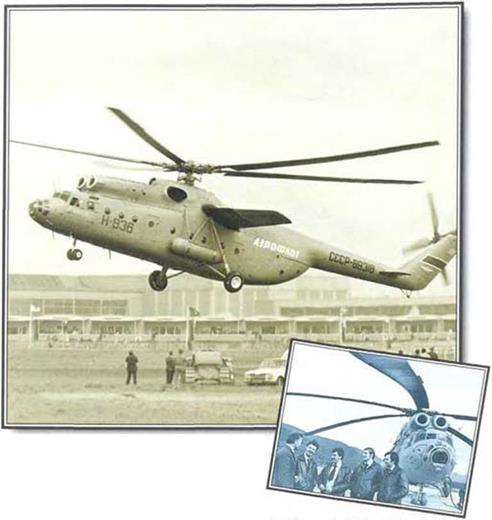 Sotting a trend for enormous gas turbine helicopters with massive load-carrying capability, the Soviet Union introduced the Mi-6 as a combined military/civil project in 1954. Intended primarily as a support vehicle for the air force’s huge An-12 transport, the Mi-6 needed just two ‘lifts’ to equal the payload of the transport. Most Mi-6s were grounded in 1992, after a long service including wartime operations in Afghanistan and Africa.
Sotting a trend for enormous gas turbine helicopters with massive load-carrying capability, the Soviet Union introduced the Mi-6 as a combined military/civil project in 1954. Intended primarily as a support vehicle for the air force’s huge An-12 transport, the Mi-6 needed just two ‘lifts’ to equal the payload of the transport. Most Mi-6s were grounded in 1992, after a long service including wartime operations in Afghanistan and Africa.
|
|
|
|
|
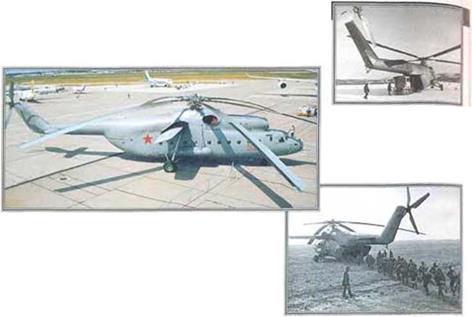
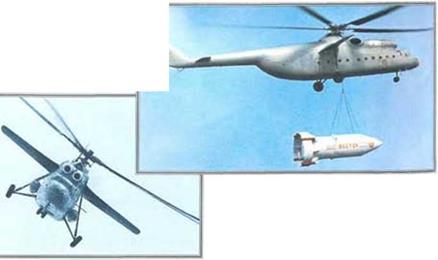

A Spacecraft recovery
Only tho Mi-6 was big enough to carry the crow capsule from the Vostok space launchers. The winf was mounted at 15 to the fuselage and provided about 20 per cent of the lift when cruising. The wings could be removed for the ‘flying crane’ role
![]()
► In 1961 the Mi-6 lifted height of 2738 motros and flew at 340.15 km/h over a 100-km circuit.
► Tho МІ-6Р was a firefighting version with a water tank, but it did not have stub wings.
>■ By 1990 Aeroflot Mi-6s had carried
15 million tonnes and 12 million people.
Bulgaria. Egypt. Ethiopia. Iraq, Libya. Peru, Syria and Vietnam.
>• Tho Mi-6R was a radio command post containing eight tonnes of equipment
► The Mi-6’s main rotor revolved clockwise at 120 rpm.
 |
![]()
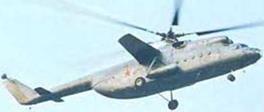
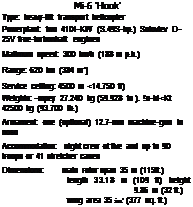
![]()


During the 1950s tlic
Soviets lud industrial and military projects scattered aero" the country and tlte audit ■’•lies faced huge problems in supplying them. It was Гін this reason that a fleet of large transport helicopters Ikeeame пе<е»аіл Tlte Mi-6 met tlte requirement from І95Я.
Everything about tin* Mi-6 was large. Its engines were ;i giant leap in gas turbine technology as applied to heavyiili thing crane Itclkopters It pkniceied the use of supplementary wings lot added lift and achieved an incredible performance for a
madtme m its weight class, basically a freight carrier, military versions dominated the soo-plas production nm whidl ended in 198І To cope with adverse weather conditions the Mi-6 had its own rutorblade de-icing system and an auxiliary power unit. Tile aircraft was known as Shestyorka’ Clinic six ) by its crews Variants included firelighters. military jammers, civil hell-liners and medevac aircraft Military versions carried a machine – gun m tire nose
first flown in 1960. lire Mi-10 was a developed flying irane’
Above: Although later Mils like the Mi-26 could lift more, they wero not built in such largo numbers as the versatile Mi-6.
version of the Mi-6, including the engines, gear I tuxes and. stretched linden’.image. Not only was the Mi 6 the biggest helicopter in the world, it was also the fastest and hail outstanding range.
|
|||
 |
|||
|
|
||
|
|||
|
|||
 |
|||
|
|||
|
|||
|
|||
|
|
||
|
|||
|


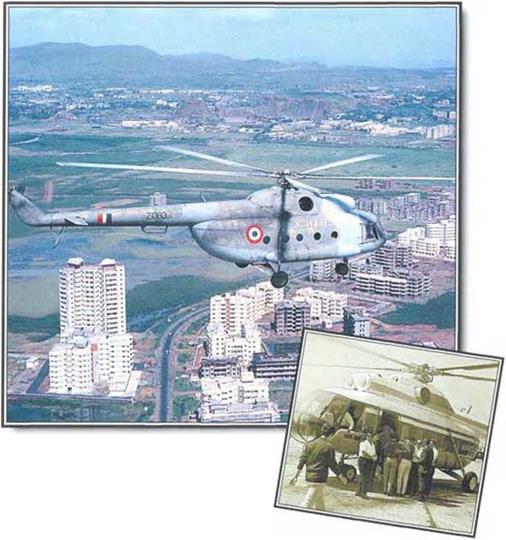 Mil
Mil











